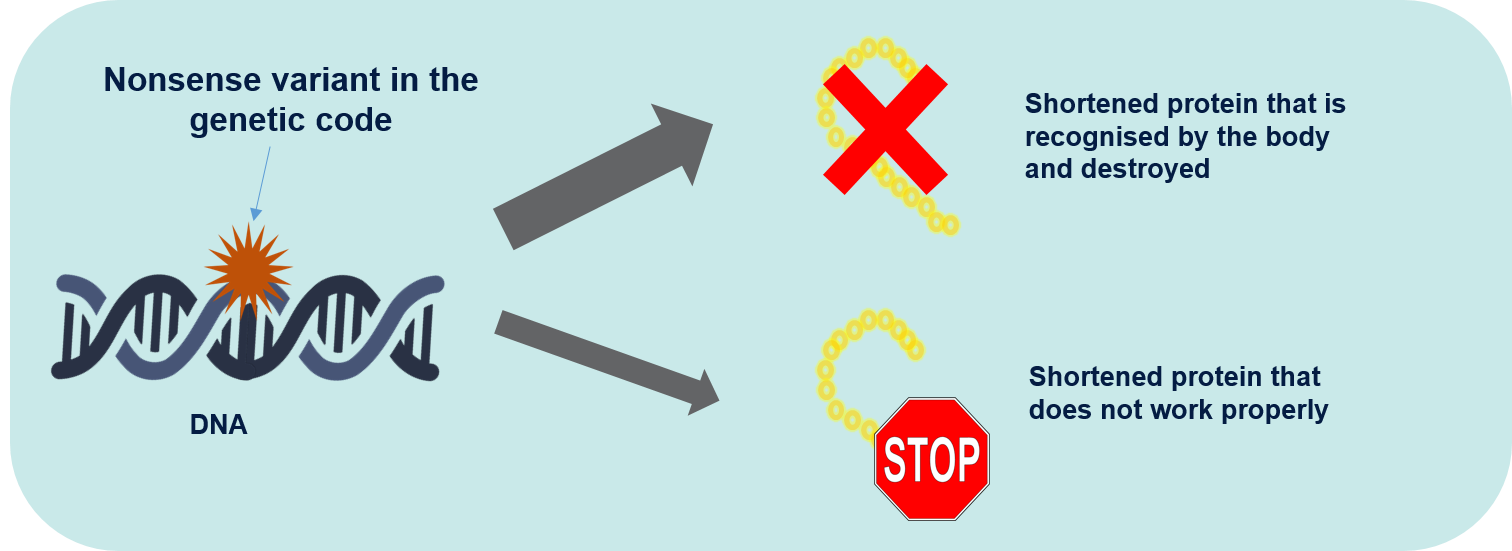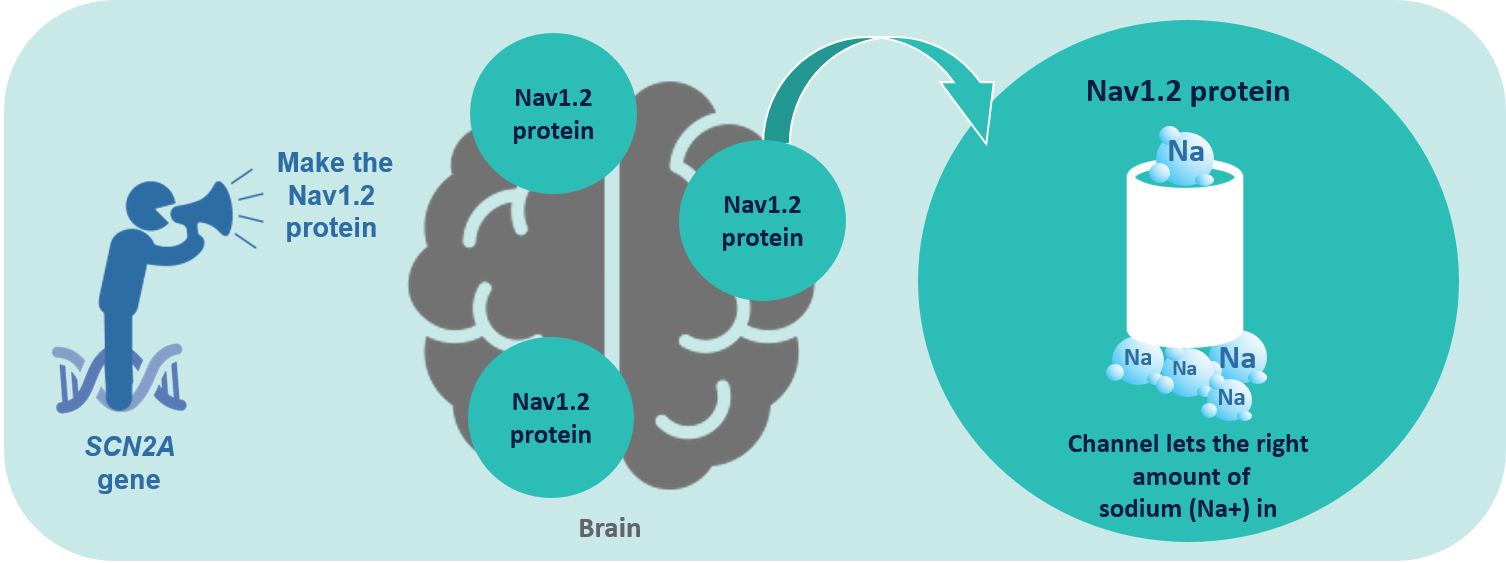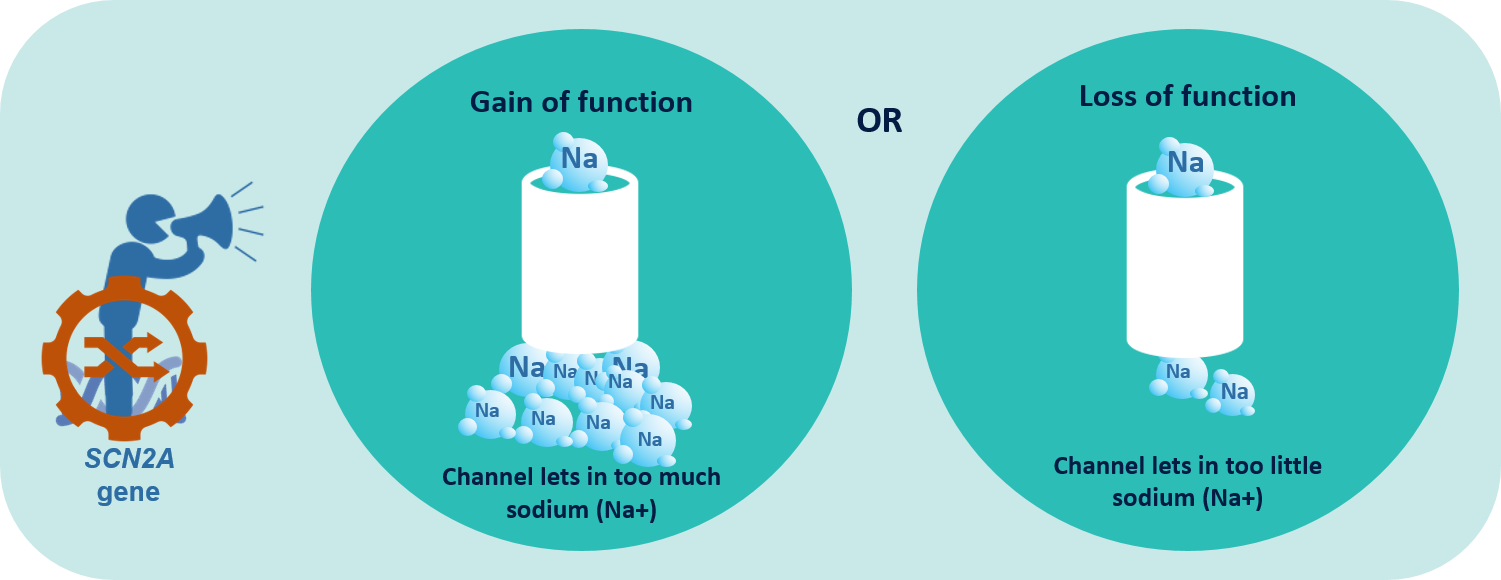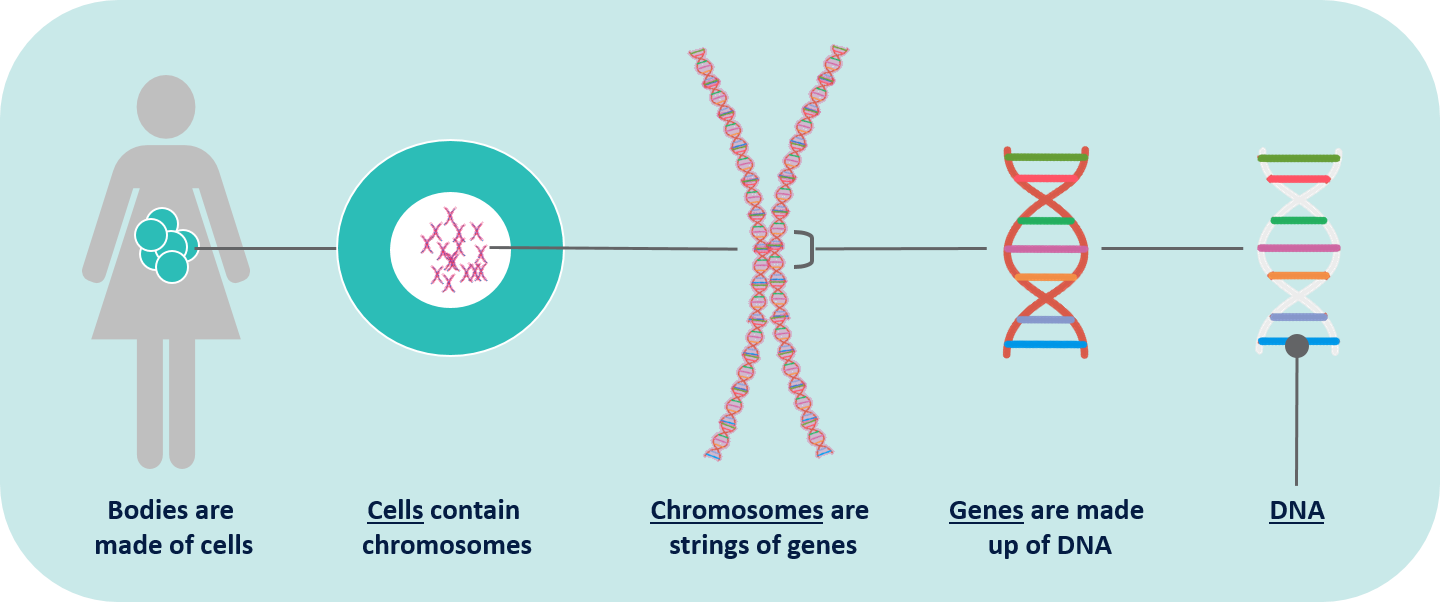Genes
- Genes carry our genetic code.
- This code is stored on DNA, which is organised into chromosomes and kept in every cell of our body.
- Our genetic code is passed down to us from our biological parents, and it makes us who we are.
Proteins
- Genes tell our bodies to make proteins.
- Proteins are found in every one of our cells and play critical roles in our bodies.
- The sequence or code of each gene tells our body how to make a particular protein.
- Proteins are made up of long strings of building blocks called amino acids. There are 20 different amino acids that can be used to make different proteins.
- Amino acids are joined together one-by-one to form proteins according to the instructions in each person’s genetic code.

Variations in genes
- We all have variations in our genes.
- For example, genetic variation is the reason some people have blue eyes while others have brown or green eyes.
- Variations may be passed down from our biological parents, or they may be new changes (variants) that occur in us by chance. Another name for a change in the genetic code is ‘mutation’.
- Sometimes a variant in our genetic code changes the way a protein is made. If this protein is essential for our body, a health condition may develop.
- Some of the genetic variants that can cause health conditions are described below.
Pathogenic variants
- A pathogenic variant is a change in a gene that either causes a health condition or makes it more likely that a health condition will develop. The finding of a pathogenic variant in a genetic or genomic test may also be called an ‘informative result’.
- There are several types of pathogenic variants.
Nonsense variants
- A nonsense variant is a change in the genetic code that adds an early ‘stop’ signal to the gene. This tells the cell to stop adding amino acids to the protein chain earlier than usual.
- The result is a shortened (truncated) protein instead of the usual full-size protein. This shorter protein may be destroyed by the body or it may not work.

Missense variants
- When there is a missense variant in a gene, one amino acid building block is replaced with another in the protein that is produced from the gene.
- Although it is only a small change in the protein, the change may have a big impact on the way the protein works.

‘Gain of function’ and ‘loss of function’ variants
- As described above, when there is a change in a gene, it can affect the way the product of the gene – the protein – works.
- When the protein is more active than usual, the genetic change is called a gain of function variant.
- When the protein is less active than usual, or does not work at all, the change is called a loss of function variant.
- Both of these types of variants can cause health conditions.
Example
The below explains gain of function and loss of function variants using SCN2A-related conditions as an example.
Gain of function and loss of function variants in SCN2A
- SCN2A is a gene that tells the body to make a protein that sits on the surface of brain cells (neurons).
- This protein is called Nav1.2. It forms a channel that controls the movement of a chemical called sodium into brain cells, as shown in the figure below.
- The movement of sodium into cells is a key part of how brain cells send signals.
- This contributes to the normal electrical balance inside the brain.

- Changes in the SCN2A gene affect the way the sodium channel works in the brain.
- This then affects the electrical messages that are sent between brain cells.
Gain of function changes in SCN2A
- The channel is more active than usual, and lets in too much sodium. This sends more signals within the brain.
- Children with gain of function changes usually develop epilepsy when they are babies.
- They may also have developmental delay and/or intellectual disability.
Loss of function changes in SCN2A
- The channel is less active, and lets too little sodium into the cell.
- Children with loss of function changes generally have autism spectrum disorder and/or intellectual disability.
- They may also have seizures that start when they are children rather than babies.

Mosaicism
- Mosaicism is a special type of genetic variation.
- Usually, all the cells in a person's body (except the eggs or sperm) have the same genetic makeup.
- People with mosaicism have a mixture of cells with different genetic information.
- This means some cells in the body may have a variant that causes a health condition, while the rest do not.
- Mosaicism may be seen across the whole body or only in a certain part of the body.
- When mosaicism only occurs in the eggs or sperm cells, it is called gonadal or germline mosaicism.
To learn more about genes and genetics, visit:
To learn about other types of genetic variants, visit MedlinePlus: What kind of gene variants are possible?
------------
Content on this page was generated via the GenE Compass project. The following article provides more information about the project:
- Robertson EG, Kelada L, Best S, Goranitis, I, Grainger N, Le Marne F, Pierce K, Nevin, SM, Macintosh R, Beavis E, Sachdev R, Bye A, Palmer EE. (2022). Acceptability and feasibility of an online information linker service for caregivers who have a child with genetic epilepsy: a mixed-method pilot study protocol. BMJ Open, 12:e063249. https://doi.org/10.1136/bmjopen-2022-063249
